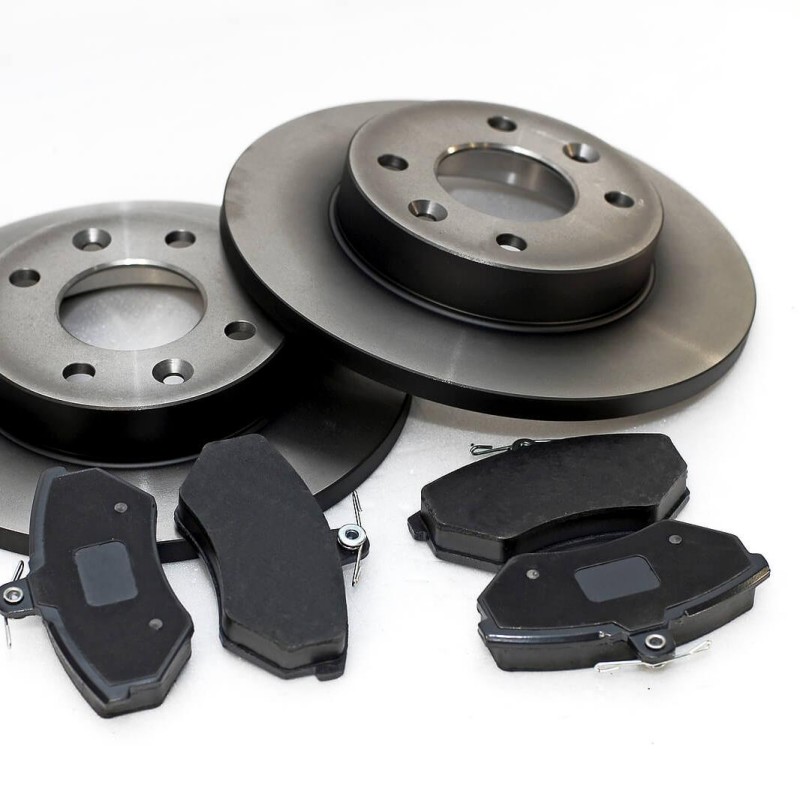The check engine light is one of the most common indicators that something may be amiss with your vehicle. For many drivers, seeing this light illuminate on the dashboard can lead to a mix of confusion and concern. Regardless of your level of automotive knowledge, understanding how to reset a check engine light is crucial for every vehicle owner. While it can signal everything from minor issues like a loose gas cap to more significant engine problems, knowing the proper steps to take can save you time and potential repair costs. This guide will delve deeply into various methods for resetting your check engine light, the reasons it may activate, troubleshooting tips, and preventative measures you can implement to prevent the light from coming on in the first place. Read on to empower yourself with the knowledge needed to troubleshoot your vehicle’s check engine light effectively.

Understanding the Check Engine Light
The check engine light is part of your car’s onboard diagnostic (OBD) system, which monitors various systems and components within the vehicle. When the light activates, it means that your car’s computer has detected an issue that requires attention. However, there are a few nuances about the check engine light that every driver should be familiar with.
What Does the Check Engine Light Indicate?
The check engine light can illuminate for numerous reasons. It may signal:
- An emissions issue: Many modern vehicles have stringent emissions standards. If your vehicle’s emissions system is malfunctioning, the check engine light will activate.
- Engine performance problems: This can range from misfires, fuel delivery issues, or problems with sensors that monitor engine function.
- Transmission issues: Sometimes, the check engine light will signal a problem with the vehicle’s transmission system, alerting you to potential performance reductions.
It’s worth noting that the check engine light can also illuminate intermittently. In some cases, it may turn off on its own once the error has been resolved. Understanding the implications of this light can help you determine the best course of action.
Why Proper Diagnosis Matters
Before diving into how to reset a check engine light, it’s essential to highlight the importance of accurate diagnosis. While resetting the light may temporarily remove the warning, it won’t fix an underlying problem. Ignoring the symptom can lead to more severe issues down the line, which could ultimately result in costly repairs. Therefore, using an OBD-II scanner is recommended to read the diagnostic trouble codes (DTC) stored in your vehicle’s computer system.
Common Reasons for the Activation of a Check Engine Light
Understanding common triggers for the check engine light can help you address the issue properly before considering how to reset a check engine light. Below are some frequent reasons why this light may activate.
Loose or Damaged Gas Cap
One of the simplest issues that can trigger the check engine light is a loose or damaged gas cap. The gas cap is designed to keep gasoline vapors from escaping. If it is not properly tightened or if it develops cracks, sensors will detect a drop in pressure and trigger the light.
Faulty Oxygen Sensor
The oxygen sensor measures the amount of unburned oxygen in the exhaust system. If this sensor is faulty, it may lead to increased emissions and decreased fuel efficiency. Replacing a faulty oxygen sensor can significantly improve fuel economy.
Catalytic Converter Issues
The catalytic converter is responsible for converting harmful emissions into less harmful compounds. If it breaks down or is obstructed, it can lead to increased exhaust emissions and a lit check engine light. Repairing or replacing a damaged catalytic converter can be expensive but is crucial for compliance with emissions standards.
Spark Plug or Ignition Coil Problems
Spark plugs ignite the air-fuel mixture in the combustion chamber. A malfunctioning spark plug or ignition coil can lead to engine misfires, resulting in poor performance and a lit check engine light. Regular maintenance and timely replacements can prevent this issue.
Mass Airflow Sensor Malfunction
The mass airflow sensor measures the air entering the engine. If it malfunctions, the engine may receive the wrong air-fuel mixture, leading to performance issues and a lit check engine light. Replacing this sensor can optimize engine performance.
Exhaust Gas Recirculation (EGR) Valve Issues
The EGR valve helps reduce harmful emissions by recirculating a portion of the exhaust gases back into the engine. If this valve malfunctions, it can lead to increased emissions and trigger the check engine light. Cleaning or replacing the EGR valve can resolve the issue.

How to Diagnose the Problem Associated with the Check Engine Light
Before you can reset a check engine light, it’s essential to diagnose the problem accurately. Here are steps to effectively diagnose the issue.
Use an OBD-II Scanner
The most effective way to diagnose a check engine light activation is to use an OBD-II scanner. These tools can be purchased or rented and connect to your vehicle’s onboard diagnostics port. Here’s how to use one:
- Locate the OBD-II Port: The port is usually found beneath the dashboard near the driver’s seat.
- Connect the Scanner: Plug in the OBD-II scanner and turn on the vehicle without starting the engine.
- Read the Codes: Follow the scanner’s prompts to retrieve any diagnostic codes. Write down the codes and consult a manual or online resource to understand their meanings.
Interpret Diagnostic Trouble Codes (DTC)
Once you have the codes, you can begin investigating the underlying issue. Each code corresponds to a specific problem. Use an online database or the scanner’s manual to find detailed descriptions of the codes. This step can guide you toward the next actions needed to rectify the issue before attempting to reset the check engine light.
Physically Inspect the Vehicle
After diagnosing through codes, a visual inspection can help spot problems that codes may not indicate. Look for:
- Loose or damaged wiring
- Cracked or damaged hoses
- Fluid leaks
- Inspect the gas cap for damage or improper sealing
Methods for How to Reset a Check Engine Light
Once an issue has been diagnosed (and potentially repaired), or if you are confident it was a minor error, it’s time to reset the check engine light. There are several methods to accomplish this.
Using an OBD-II Scanner
The most straightforward method for resetting a check engine light is to use an OBD-II scanner. Here’s how to do it:
- With the Scanner Connected: Access the settings or menu on the scanner.
- Select “Clear Codes” or “Reset”: Most scanners will have an option to clear the trouble codes. Select that option.
- Follow the Prompts: Confirm the action to reset the codes and turn off the check engine light.
This method not only resets the light but also notifies you if the problem persists upon the next ignition cycle.
Disconnecting the Battery
Another method for resetting the check engine light is to disconnect the vehicle’s battery. This is a more manual approach and should be done as follows:
- Turn Off the Vehicle: Ensure your vehicle is off before proceeding.
- Open the Hood: Locate the battery.
- Disconnect the Negative Terminal: Using a wrench, loosen the bolt on the negative terminal and remove the cable.
- Wait for 15-30 Minutes: This period allows the vehicle’s computer to reset.
- Reconnect the Negative Terminal: Once the time is up, securely fasten the negative cable back onto the terminal.
Note that this method will reset not only the check engine light but other electronic systems as well.
Removing and Replacing the Fuses
Another way to reset the check engine light involves removing the fuse associated with the OBD-II system. This method may suit those who are not comfortable disconnecting the battery:
- Locate the Fuse Box: The fuse box is typically beneath the dashboard or under the hood.
- Identify the Correct Fuse: Using the fuse diagram, find the fuse designated for the engine control module (ECM) or OBD-II system.
- Remove the Fuse: Use a fuse puller or small pliers to safely remove the fuse.
- Wait for a Few Minutes: This brief delay helps reset the electrical systems.
- Reinsert the Fuse: Once ready, place the fuse back into its original slot.
This method effectively resets the system without needing to touch the vehicle’s battery.
Waiting for the Light to Turn Off Automatically
Sometimes, the check engine light may turn off on its own after a few driving cycles. This typically occurs if the issue that triggered the light has self-corrected. Depending on the severity of the initial issue, consider giving it some time before seeking other methods.
When to Seek Professional Help
While resetting your check engine light can be a straightforward process, certain situations necessitate professional assistance.
Persistent Check Engine Light
If the check engine light remains illuminated after attempts to reset it, this indicates that a legitimate issue persists. Continued problems may require deeper diagnostic tools and expertise that only qualified technicians possess.
Complex Repairs Needed
Some issues may involve complex systems that require dealer-level equipment or OEM parts to resolve. If you’re not confident in handling repairs yourself or the problem seems beyond basic maintenance, seeking professional help is advisable.
Warranty Considerations
If your vehicle is still under warranty, it’s often better to take it to an authorized dealership. Attempting repairs or modifications on your own could void warranties, especially for elements that require specialized knowledge or tools.
Maintaining your Vehicle to Avoid Check Engine Light Issues
Preventative maintenance can significantly decrease the chances of your check engine light illuminating unexpectedly. Here are some proactive tips:
Regular Vehicle Maintenance
Maintain a consistent service schedule with regular oil changes, fluid checks, and inspections. Following your manufacturer’s recommended services will help prevent many issues that cause the check engine light to activate.
Monitor Warning Signs
Pay attention to your vehicle’s performance. Changes such as unusual noises, decreased acceleration, or frequent stalling can indicate a problem needing attention. Addressing these issues sooner than later can prevent triggering the check engine light.
Perform Routine Inspections
Regularly check the status of components such as the gas cap, spark plugs, and sensors. If you notice any wear or damage, replace them promptly to maintain optimal performance.
Use Quality Fuel
Using low-quality or incorrect fuel can affect engine performance and lead to activation of the check engine light. Always fill your tank with fuel that meets your vehicle’s specifications.

Conclusion
In conclusion, understanding how to reset a check engine light is a valuable skill for every car owner. While this process can often be straightforward, recognizing when to address underlying issues or seek professional assistance is critical to ensuring longevity and reliability in your vehicle.
Whether using an OBD-II scanner, disconnecting the battery, or simply waiting for the light to turn off, know that these methods provide various solutions for the modern vehicle owner. Additionally, maintaining your vehicle through regular maintenance and monitoring will significantly reduce the potential for future activations.
By being proactive about diagnosing and addressing check engine light issues, you’ll not only enhance your safety on the road but also ensure that your vehicle runs smoothly for miles to come. So, take charge of your car’s health, and remember—the check engine light is your car’s way of communicating. Treat it well, and it will serve you faithfully.


